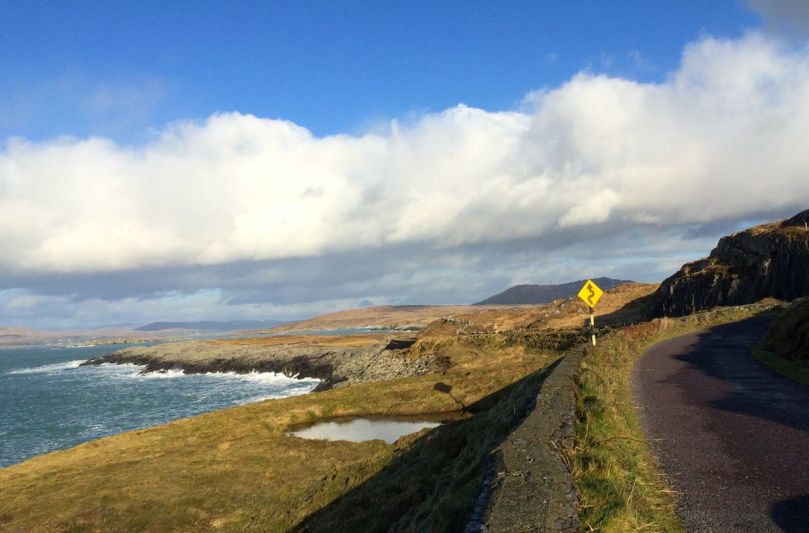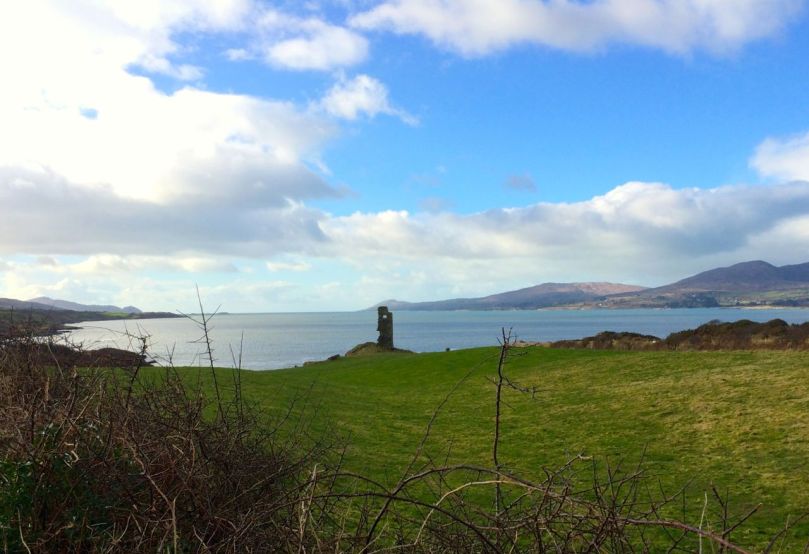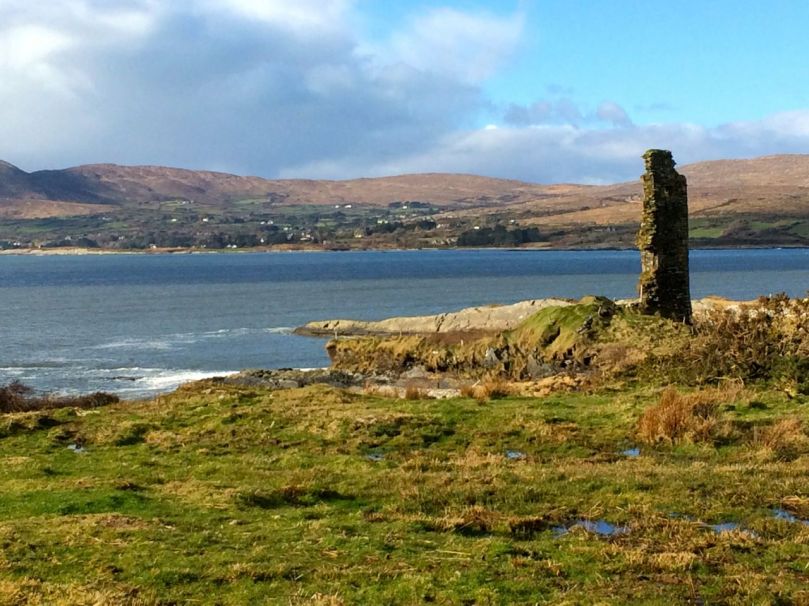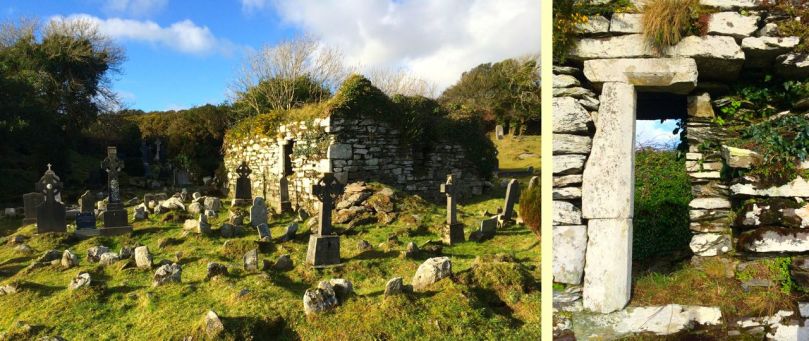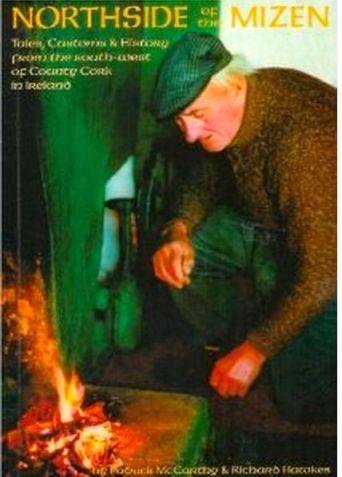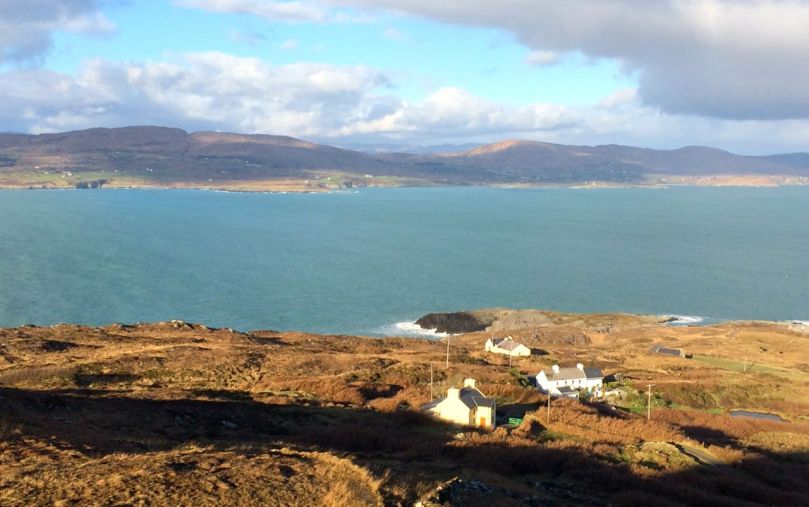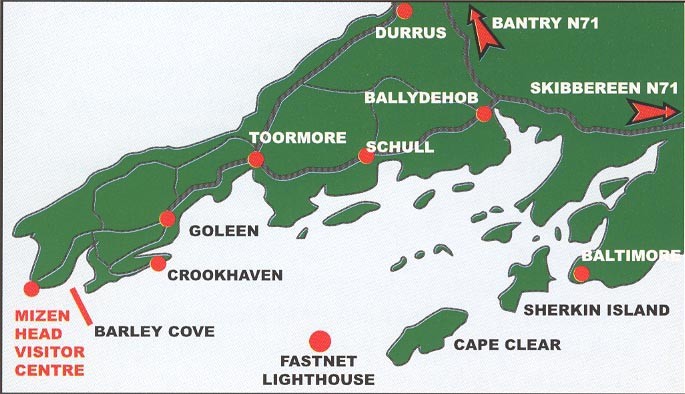This week we visited a tiny jewel of a garden. Tucked behind Wiseman’s general store in Durrus is a two and a half acre gem called Carraig Abhainn (Rocky River, pronounced KA-rig OW-in [OW to rhyme with now]). It’s been a labour of love for over 20 years – the work of Eugene and Hazel Wiseman. We were lucky to have a chat with Eugene while we were there.
There are no large signs out on the road pointing the way and little advertising in the local media, so this is not as well known as it deserves. You pop into Wiseman’s shop, pay €5, open the gate at the end of the building, and step into a small wonderland.
The first thing you become aware of is water. A mill stream forms one boundary of the garden, crossed by little bridges here and there. The Four Mile River forms another – and this stretch is truly magnificent. Clear and sparkling, it rushes and falls and leaps over the rocks that give the garden its name. The paths have been cleverly constructed so that as you stroll you encounter the river at different points. Each point has a unique vista that encourages you to gaze, contemplate, photograph or just sit and listen.
The daffodils were over when we went and some of the rhododendrons had faded too. Nevertheless, around every bend was a new feast for the eye and the camera, from the undergrowth of bluebells to the camellias, yellow irises and the climbing clematis. Exotic trees add variety of colour, texture and size – “I wonder what that is?” became our mantra. (For those who need an answer, the garden website provides a list of plants.)
A wonderfully idiosyncratic feature of this garden is the statuary – a unique blend of the classical and the quirky, perfectly placed to enhance a long path, mark a set of steps, or simply be discovered rounding a corner. Near the entrance is a mural, with Greek columns and a water garden and benches that invite you to enjoy this sunny spot.
There’s a West Cork Garden Trail in the second half of June and Carraig Abhainn is one of the gardens featured on the trail. But don’t wait until then – if you are anywhere in the vicinity of Durrus drop by Wiseman’s and treat yourself to a quiet hour or two soaking up the beauty and tranquility of this charming oasis. Bring a latte and piece of cake from the excellent Gateway restaurant next door – that’s all you need to complete your little slice of heaven.














